
Namangan: The Heart of Fergana Valley
Discover Namangan, the gem of the Fergana Valley, where ancient history meets modern charm in a city of gardens, markets, and delicious cuisine.
Namangan, the city of gardens and ancient history, is nestled in the picturesque Fergana Valley of Uzbekistan. Known for its vibrant cultural scene and hospitable locals, Namangan offers a blend of modernity and tradition that captivates every visitor. You will find an array of historical landmarks, including the stunning Mulla Kyrgyz Madrasa and the ancient Namangan Mosque, which stand as testaments to the city's rich past. The city is also famous for its lush parks and gardens. Babur Park, named after the founder of the Mughal Empire, is an oasis of greenery where you can relax and soak in the serene atmosphere. Namangan's bustling bazaars, such as the Chorsu Bazaar, offer a sensory overload with their colorful textiles, aromatic spices, and intricate handicrafts. These markets are a perfect place to immerse yourself in the local culture and perhaps purchase a unique souvenir. Don't miss the chance to taste Namangan’s delectable cuisine. From flavorful plov, the national dish, to mouth-watering samsa, the local food is a culinary delight. The city’s culinary heritage reflects its diverse cultural influences and is sure to leave a lasting impression on your taste buds. Whether you are exploring its historical sites, relaxing in its parks, or indulging in its cuisine, Namangan promises an unforgettable experience.
Local tips in Namangan
- Visit early in the morning to explore the bazaars before they get crowded.
- Dress modestly when visiting religious sites out of respect for local customs.
- Hire a local guide to get a deeper understanding of the city's history and culture.
- Try the local tea houses for a taste of authentic Uzbek hospitality and traditional tea.
- Carry cash, as many places might not accept credit cards.
- Learn a few basic phrases in Uzbek or Russian to make communication easier.
Namangan: The Heart of Fergana Valley
Namangan, the city of gardens and ancient history, is nestled in the picturesque Fergana Valley of Uzbekistan. Known for its vibrant cultural scene and hospitable locals, Namangan offers a blend of modernity and tradition that captivates every visitor. You will find an array of historical landmarks, including the stunning Mulla Kyrgyz Madrasa and the ancient Namangan Mosque, which stand as testaments to the city's rich past. The city is also famous for its lush parks and gardens. Babur Park, named after the founder of the Mughal Empire, is an oasis of greenery where you can relax and soak in the serene atmosphere. Namangan's bustling bazaars, such as the Chorsu Bazaar, offer a sensory overload with their colorful textiles, aromatic spices, and intricate handicrafts. These markets are a perfect place to immerse yourself in the local culture and perhaps purchase a unique souvenir. Don't miss the chance to taste Namangan’s delectable cuisine. From flavorful plov, the national dish, to mouth-watering samsa, the local food is a culinary delight. The city’s culinary heritage reflects its diverse cultural influences and is sure to leave a lasting impression on your taste buds. Whether you are exploring its historical sites, relaxing in its parks, or indulging in its cuisine, Namangan promises an unforgettable experience.
When is the best time to go to Namangan?
Iconic landmarks you can’t miss
Afsonalar vodiysi, Namangan
Explore the enchanting Afsonalar Vodiysi in Namangan, a serene park filled with lush landscapes and rich cultural legends.

Park Bobur
Experience the beauty and tranquility of Park Bobur, a stunning green oasis in Namangan, Uzbekistan, perfect for relaxation and family outings.

Buyuk Ipak Yo'li Hotel
Experience the charm of Namangan at Buyuk Ipak Yo'li Hotel, where comfort meets local culture in a perfect blend.

Shedevr Plaza
Experience the perfect blend of comfort and luxury at Shedevr Plaza, your home away from home in Namangan, Uzbekistan.

Afsona Land
Discover the joy of Afsona Land in Namangan, a thrilling amusement park filled with rides, games, and beautiful landscapes, perfect for family fun.
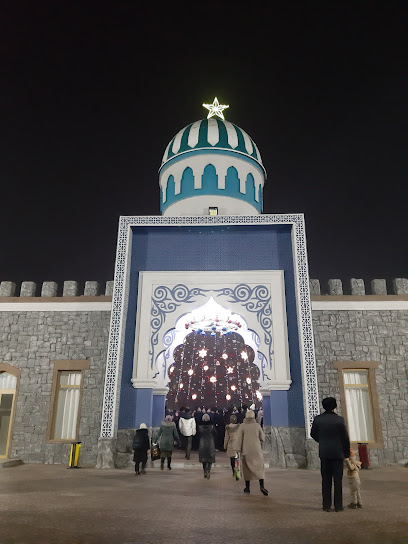
Pereval Burgut
Explore the breathtaking landscapes of Pereval Burgut in Namangan Region, Uzbekistan, a must-visit destination for nature lovers and adventure seekers.

Akhsikent Hotel
Discover the perfect blend of modern comfort and Uzbek hospitality at Akhsikent Hotel, your ideal retreat in Namangan.

Gold Afsona
Discover the breathtaking hiking trails of Gold Afsona in Namangan, Uzbekistan, where nature's beauty and adventure await every traveler.

Axsikent
Discover the breathtaking beauty of Axsikent, a hidden scenic spot in Uzbekistan's Namangan Region, perfect for nature lovers and adventurers.

Abu Yusuf mosque
Explore the architectural beauty and tranquil atmosphere of Abu Yusuf Mosque, a cultural gem in the heart of Namangan Region, Uzbekistan.

Namangan Square
Explore the vibrant Namangan Square, a cultural gem in Uzbekistan offering a blend of heritage, relaxation, and local events for an unforgettable experience.

Boqi Polvon Jome Masjidi
Experience the spiritual and architectural wonders of Boqi Polvon Jome Masjidi in Namangan, a serene escape into Uzbekistan's rich Islamic heritage.

Hamza kalsavoy
Explore Hamza Kalsavoy, a cultural gem in Namangan, Uzbekistan, where rich heritage meets vibrant local life amidst stunning scenery.

Otavalikhon Mosque
Discover the architectural beauty and spiritual tranquility of Otavalikhon Mosque in Namangan, a cultural landmark in Uzbekistan.

Qamchiq dovoni
Discover the breathtaking beauty of Qamchiq Dovoni in Namangan, Uzbekistan, a serene escape into nature with stunning mountain views.

Unmissable attractions to see
Afsonalar vodiysi, Namangan
Experience the natural beauty and cultural charm of Afsonalar Vodiysi, a serene park in the heart of Namangan, Uzbekistan.

Park Bobur
Explore the lush landscapes and tranquil ambiance of Park Bobur, a must-visit oasis in Namangan, Uzbekistan, perfect for relaxation and family fun.
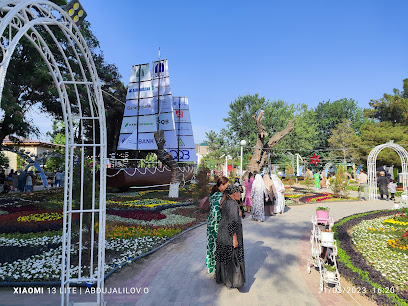
Afsona Land
Experience the excitement of Afsona Land, a family-friendly amusement park in Namangan, Uzbekistan, with thrilling rides and lush green spaces for relaxation.

Afsonalar bog'i
Explore Afsonalar Bog'i, a serene park in Namangan, Uzbekistan, perfect for tranquil strolls, family picnics, and a refreshing escape into nature.

Hamza kalsavoy
Explore the cultural richness and stunning architecture of Hamza Kalsavoy, a captivating tourist attraction in the heart of Namangan, Uzbekistan.
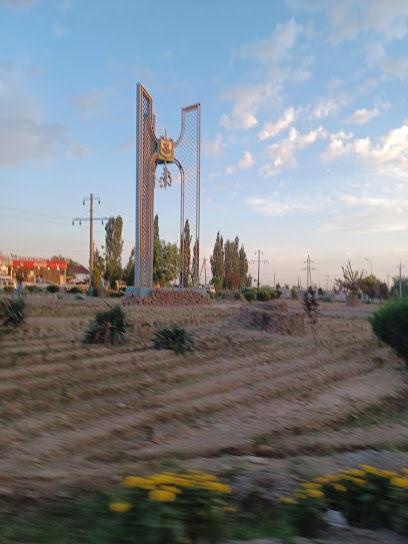
Краеведческий музей Наманганской области
Discover the rich cultural heritage of Uzbekistan at the Namangan Regional Museum, showcasing artifacts that tell the story of the region's vibrant history.

Najdar tepa
Experience the stunning landscapes and cultural heritage of Najdar Tepa, a serene escape in the Namangan region of Uzbekistan.

Iskusstvennyy Vodopad
Discover the serene beauty of Iskusstvennyy Vodopad in Namangan, a stunning artificial waterfall perfect for relaxation and photography amidst lush greenery.

Chadak uzbekistan.Chodek dam olish maskani
Experience the serene beauty of Chadak, Uzbekistan, a tranquil tourist attraction perfect for nature lovers and relaxation seekers.

Yangiobod ARKA
Experience the beauty and culture of Yangiobod ARKA in Namangan, Uzbekistan, where nature meets tradition in a stunning tourist attraction.

G‘ova_Nuri dam olish maskani
Explore the natural beauty and serene atmosphere of G‘ova Nuri Recreation Area, a hidden gem in Uzbekistan's Namangan Region.

Atraksion
Explore Atraksion in Namangan, a serene tourist attraction offering breathtaking landscapes and a glimpse into Uzbekistan's vibrant culture.

Charxpalak
Explore Charxpalak, a stunning tourist attraction in Namangan, Uzbekistan, offering breathtaking landscapes and a taste of local culture and traditions.

Dam olish uchun
Discover tranquility at Dam olish uchun, Namangan's serene park, where natural beauty meets peaceful relaxation for tourists and locals alike.

Isʼhoqxon To'ra Ibrat memorial majmuasi
Explore the serene beauty and cultural significance of Ischoqxon To'ra Ibrat Memorial Complex in Namangan, Uzbekistan, a must-visit for history enthusiasts.

Essential places to dine
Zamin Oilaviy Restorani
Discover authentic Uzbek cuisine at Zamin Oilaviy Restorani in Namangan – where flavor meets tradition in every dish.

Istanbul - asylum of taste
Explore Istanbul's diverse culinary landscape where East meets West, offering unforgettable flavors and dining experiences.

Flamingo
Experience authentic Uzbek cuisine at Flamingo in Namangan - where tradition meets taste in every dish.

Ресторан «Super Gold Sweets»
Experience the best of Uzbek cuisine with delightful desserts at Super Gold Sweets in Namangan – where every bite is a taste of tradition.

Shodiyona
Experience authentic Uzbek cuisine at Shodiyona in Namangan – where tradition meets flavor in every dish.

Bellissimo Pizza Namangan
Indulge in authentic Italian flavors at Bellissimo Pizza Namangan - where every slice tells a story.

Akhmadbey restourant
Experience authentic Turkish flavors at Akhmadbey Restaurant in Namangan - where every dish tells a story.

Akhmadbek restaurant
Discover the authentic flavors of Uzbekistan at Akhmadbek Restaurant in Namangan - where tradition meets taste.
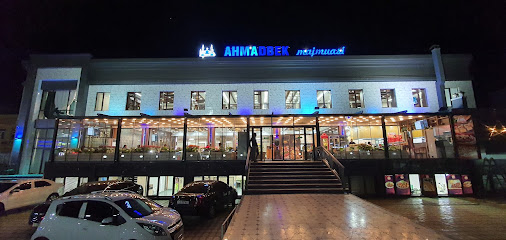
GAVHAR restoran
Savor authentic Turkish flavors at GAVHAR Restaurant in Namangan - where culinary tradition meets warm hospitality.

NAVBAHOR RESTAURANT
Experience authentic Uzbek cuisine at Navbahor Restaurant in Namangan - a culinary journey through rich flavors and warm hospitality.
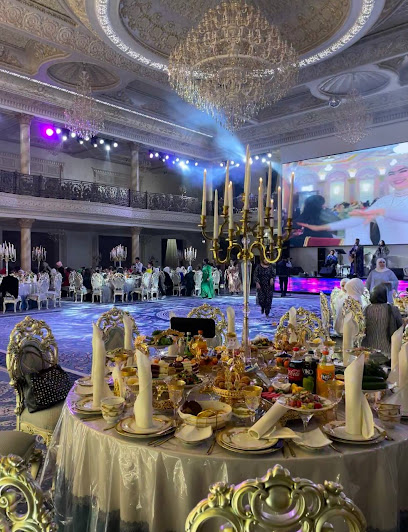
Emirate restaurant
Experience authentic Uzbek cuisine in a warm and inviting family-friendly setting at Emirate Restaurant in Namangan Region.
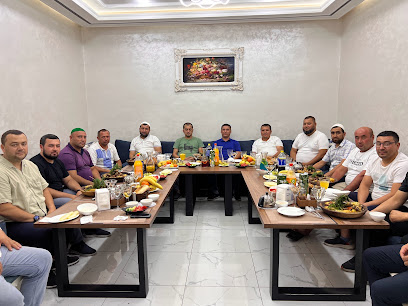
Makon restaraunt
Experience authentic Uzbek cuisine at Makon Restaurant in Namangan – where every dish tells a story of tradition and flavor.

BABA FOOD STEAKHOUSE
Experience exquisite flavors at Baba Food Steakhouse in Namangan – where quality meets tradition in every bite.

Lagman hause
Discover authentic Uzbek flavors at Lagman Hause in Namangan - where every dish tells a story.

Parvina oshhonasi
Discover the authentic taste of Uzbekistan at Parvina Oshhonasi in Namangan - where tradition meets flavor.

Markets, malls and hidden boutiques
Safia
Discover the sweet flavors of Uzbekistan at Safia Bakery in Namangan, where traditional confections meet modern delights.

Yangi Bozor
Discover unique fashion and vibrant culture at Yangi Bozor, Namangan's premier clothing market showcasing local craftsmanship.

Akhsikent Qurilish Savdo
Explore the vibrant Akhsikent Qurilish Savdo in Namangan – your go-to supermarket for local goods and unique shopping experiences.

RICHMAN Namangan
Explore RICHMAN Namangan: A modern shopping mall combining local charm, diverse brands, and delightful dining in the heart of Uzbekistan.

IMIR savdo majmuasi
Discover a stylish collection of men's clothing at IMIR Savdo Majmuasi, the go-to shopping destination in Namangan for fashion-forward travelers.

Liwali brand
Explore Liwali Brand in Namangan for trendy clothing and unique Uzbek fashion that captivates tourists and locals alike.

Marokash
Explore the vibrant fashion scene at Marokash, a unique clothing boutique in Namangan, Uzbekistan, blending tradition with contemporary style.

D.MARETTI shop
Discover unique fashion and quality apparel at D.MARETTI, the premier clothing store in Namangan, Uzbekistan.

Wildberries
Explore Wildberries Shopping Mall in Namangan for a vibrant mix of local and international brands in a lively atmosphere.

Lilium Boutique
Explore Lilium Boutique in Namangan for exquisite women's fashion that blends elegance with local tradition, perfect for every occasion.

VANESSA Boutique
Explore the elegance and unique styles at VANESSA Boutique, the premier women's clothing store in Namangan, Uzbekistan.

Exclusive Boutique
Explore Exclusive Boutique in Namangan for top-notch men's clothing and stylish denim that elevate your fashion game.

Lola sirlik idishlar do'koni
Explore the charm of Lola Sirlik Idishlar Do'koni in Namangan, a treasure trove of authentic Uzbek pottery and handcrafted dishes.

Ali Market
Discover the flavors and colors of Uzbekistan at Ali Market, a vibrant grocery store in Namangan offering fresh produce and local delicacies.

FONON Namangan
Explore the artistry of handcrafted jewelry at FONON Namangan, a premier destination for unique gifts and cultural treasures in Uzbekistan.

Essential bars & hidden hideouts
Oh-la-la
Experience the vibrant nightlife at Oh-la-la, Namangan's stylish bar offering an exceptional selection of drinks and a lively atmosphere.

Legenda
Discover the heart of Namangan's nightlife at Legenda Bar, where lively atmosphere meets delicious drinks and local culture.

Beer center
Experience the vibrant nightlife of Namangan at the Beer Center, where a diverse selection of beers and a welcoming ambiance await.
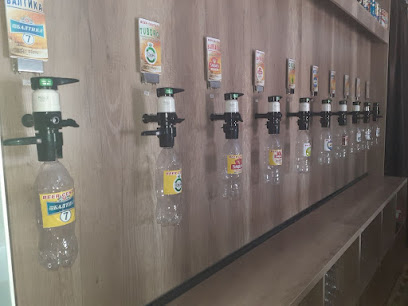
IBROHIM OTA CHOYXONASI
Immerse yourself in the local culture at Ibrohim Ota Choyxonas, a charming bar in Namangan, Uzbekistan, offering delightful drinks and a warm atmosphere.

Vino-vodka01
Experience the vibrant nightlife of Namangan at Vino-vodka01, where exceptional beverages meet a warm, welcoming atmosphere.

BAR MIRISHKOR
Experience the lively atmosphere and local flavors at Bar Mirishkor, Namangan's go-to spot for relaxation and cultural immersion.

Qaxramon baliq oshxonasi
Experience the vibrant atmosphere and local flavors at Qaxramon Baliq Oshxonasi, the heart of Namangan's nightlife.

Aynur
Experience the cozy atmosphere of Aynur in Namangan, a perfect bar retreat for tourists seeking relaxation and local charm.

Gsgsh
Experience the local charm and vibrant atmosphere at Gsgsh, a hidden bar gem in Namangan, Uzbekistan, perfect for relaxation and connection.

barvikha
Experience the vibrant culture of Namangan at Barvikha, a cozy bar offering local drinks and a welcoming atmosphere for travelers.

5 barmoq
Discover the vibrant nightlife and rich cultural experience at 5 Barmoq, a must-visit bar in Namangan, Uzbekistan, perfect for tourists and locals alike.

Kristall
Discover Kristall in Namangan, the perfect bar for relaxation and mingling with locals while enjoying unique Uzbek beverages.

Relax lounge
Experience the soothing ambiance of the Relax Lounge in Namangan, Uzbekistan – a perfect bar retreat for tourists seeking relaxation and local flavors.

Valijon aka shashliklari
Savor the authentic flavors of Uzbekistan with delicious shashlik at Valijon, a cozy bar in Namangan's vibrant culinary scene.

Tabiiy kokteyl
Discover the lively nightlife at Tabiiy Kokteyl, a bar in Namangan where creative cocktails and vibrant atmosphere blend seamlessly.

Local Phrases
-
- HelloSalom
[sa-lom] - GoodbyeXayr
[hayr] - YesHa
[ha] - NoYo'q
[yoq] - Please/You're welcomeIltimos
[il-ti-mos] - Thank youRahmat
[rah-mat] - Excuse me/SorryKechirasiz
[ke-chi-ra-siz] - How are you?Qalaysiz?
[qa-la-y-siz] - Fine. And you?Yaxshi. Sizni?
[ya-xshi. siz-ni] - Do you speak English?Inglizcha gapirasizmi?
[ing-liz-cha ga-pi-ra-siz-mi] - I don't understandTushunmadim
[tu-shun-ma-dim]
- HelloSalom
-
- I'd like to see the menu, pleaseMenyuni ko'rsatishingiz mumkinmi, iltimos
[me-nyu-ni korsa-ti-shing-iz mum-kin-mi, il-ti-mos] - I don't eat meatMen go'sht yemayman
[men go-sht ye-may-man] - Cheers!Salomatliklar!
[sa-lo-mat-lik-lar] - I would like to pay, pleaseTo'lovni qilmoqchiman, iltimos
[to-lov-ni qil-moq-chi-man, il-ti-mos]
- I'd like to see the menu, pleaseMenyuni ko'rsatishingiz mumkinmi, iltimos
-
- Help!Yordam!
[yor-dam] - Go away!Yur!
[yur] - Call the Police!Politsiyani chaqiring!
[po-lit-si-ya-ni cha-qir-ing] - Call a doctor!Tabibni chaqiring!
[ta-bib-ni cha-qir-ing] - I'm lostMen yo'qolganman
[men yo-qol-gan-man] - I'm illMen kasalman
[men ka-sal-man]
- Help!Yordam!
-
- I'd like to buy...Men ... sotib olmoqchiman
[men ... so-tib ol-moq-chi-man] - I'm just lookingMen faqat qarayapman
[men faqat qa-ra-ya-man] - How much is it?Bu qancha?
[bu qan-cha] - That's too expensiveBu juda qimmat
[bu ju-da qim-mat] - Can you lower the price?Narxni pastga tushirishingiz mumkinmi?
[narx-ni past-ga tu-shi-ri-shing-iz mum-kin-mi]
- I'd like to buy...Men ... sotib olmoqchiman
-
- What time is it?Soat necha bo'ldi?
[so-at ne-cha bol-di] - It's one o'clockBir soat
[bir so-at] - Half past (10)O'n yarim
[on ya-rim] - MorningErtalab
[er-ta-lab] - AfternoonTushlik
[tush-lik] - EveningKecha
[ke-cha] - YesterdayKecha
[ke-cha] - TodayBugun
[bu-gun] - TomorrowErtaga
[er-ta-ga] - 1Bir
[bir] - 2Ikki
[ik-ki] - 3Uch
[uch] - 4To'rt
[tor-t] - 5Besh
[besh] - 6Olti
[ol-ti] - 7Yetti
[yet-ti] - 8Sakkiz
[sak-kiz] - 9To'qqiz
[toq-qiz] - 10O'n
[on]
- What time is it?Soat necha bo'ldi?
-
- Where's a/the...?... qayerda?
[qay-er-da] - What's the address?Manzil qayerda?
[man-zil qay-er-da] - Can you show me (on the map)?Menga ko'rsatingiz mumkinmi (xaritada)?
[men-ga korsa-tin-giz mum-kin-mi (xa-ri-ta-da)] - When's the next (bus)?Keyingi (avtobus) qachon?
[ke-yin-gi (av-to-bus) qa-cho-n] - A ticket (to ....)Bilet (....ga)
[bi-let (ga)]
- Where's a/the...?... qayerda?
History of Namangan
-
Namangan's history dates back to ancient times, with archaeological findings suggesting that the region was inhabited as early as the Bronze Age. Early settlers in this fertile valley along the Syr Darya River were primarily engaged in agriculture and trade. The region's advantageous location made it a crossroads for various cultures and civilizations, contributing to its diverse cultural tapestry.
-
The prominence of Namangan grew significantly during the Silk Road era. As a key trading hub, it connected the East and West, facilitating the exchange of goods, ideas, and cultures. The city's bustling bazaars and caravanserais were frequented by merchants from China, Persia, India, and beyond, making it a melting pot of cultures and traditions that enriched its historical and cultural heritage.
-
In the late 18th century, Namangan became an important part of the Kokand Khanate. The khanate's rule brought about significant architectural and infrastructural developments, including the construction of mosques, madrasahs, and caravanserais. This period also saw the flourishing of arts and crafts, particularly the production of ceramics and textiles, which are still renowned today.
-
Namangan, along with the rest of the Kokand Khanate, fell under Russian control in the late 19th century. The Tsarist administration introduced new administrative and economic systems, which were further expanded during the Soviet era. The city underwent industrialization, with significant investments in cotton processing, silk production, and other industries. Soviet rule also brought about changes in social and cultural dynamics, including the promotion of education and atheism.
-
Following Uzbekistan's independence in 1991, Namangan has experienced a period of significant transformation and revitalization. Efforts have been made to restore and preserve its historical sites, while also modernizing infrastructure and promoting economic development. The city has embraced its rich cultural heritage, celebrating traditional crafts, festivals, and customs that reflect its diverse history.
-
Namangan is home to several historical and cultural landmarks that showcase its rich heritage. Key sites include the Mullah Kyrgyz Madrasa, built in the 19th century, and the Khodjamni Kabri Mausoleum, which dates back to the 18th century. The city's vibrant bazaars, such as the Chorsu Bazaar, remain central to its cultural life, offering a glimpse into traditional crafts, local cuisine, and daily life in Namangan.
Namangan Essentials
-
Namangan is located in the Fergana Valley in eastern Uzbekistan. The nearest international airport is Namangan Airport (NMA), which has direct flights from major Uzbek cities such as Tashkent and Fergana. Alternatively, you can fly into Tashkent International Airport (TAS) and take a domestic flight, train, or bus to Namangan. The journey by road from Tashkent to Namangan takes approximately 5-6 hours.
-
Namangan is well-connected by public transportation. Buses and minibuses (marshrutkas) are the primary means of local transport and are an affordable way to get around. Taxis are also widely available and relatively inexpensive. For a more comfortable and flexible option, consider renting a car, though be aware that traffic can be hectic. Cycling is also popular for short distances.
-
The official currency in Uzbekistan is the Uzbekistani Som (UZS). Credit cards are accepted in larger hotels, restaurants, and some shops, but it is advisable to carry cash, especially in smaller establishments and markets. ATMs are available in Namangan, but they can sometimes be unreliable, so it's a good idea to bring some cash with you.
-
Namangan is generally a safe city for tourists, but standard precautions should be taken. Avoid walking alone at night in unfamiliar areas and keep an eye on your belongings in crowded places. While there are no specific high-crime areas targeting tourists, it is always best to stay vigilant. Stick to well-lit and populated areas, especially in the evening.
-
In case of emergency, dial 103 for medical emergencies and 102 for police assistance. The local hospital and clinics are equipped to handle most health issues. It is recommended to have travel insurance that covers medical emergencies. Pharmacies are available for minor health concerns and over-the-counter medications.
-
Fashion: Do dress modestly, especially when visiting religious sites. Avoid wearing revealing clothing. Religion: Do respect local customs and traditions. Always cover your head when entering mosques. Public Transport: Do be respectful and give up your seat to elderly passengers. Don't eat or drink on public transport. Greetings: Do greet people with a handshake. A slight bow of the head is also a sign of respect. Eating & Drinking: Do try local delicacies and accept food offerings graciously. Don’t refuse hospitality, as it is considered impolite.
-
To experience Namangan like a local, visit the local bazaars such as Chorsu Bazaar where you can buy fresh produce and traditional Uzbek goods. Engage with locals, as they are often very friendly and willing to share stories about the city’s history and culture. Don’t miss visiting the Akhsikent archaeological site and the Babur Park for a taste of local history and natural beauty. For a unique experience, try the local tea houses where you can relax and enjoy traditional Uzbek tea.
Nearby Cities to Namangan
-
Things To Do in Andijan
-
Things To Do in Jalal-Abad
-
Things To Do in Osh
-
Things To Do in Angren
-
Things To Do in Chirchiq
-
Things To Do in Khujand
-
Things To Do in Tashkent
-
Things To Do in Shymkent
-
Things To Do in Kyzyl-Oi
-
Things To Do in Istaravshan
-
Things To Do in Bishkek
-
Things To Do in Djizak
-
Things To Do in Jizzakh
-
Things To Do in Vahdat
-
Things To Do in Tokmok




